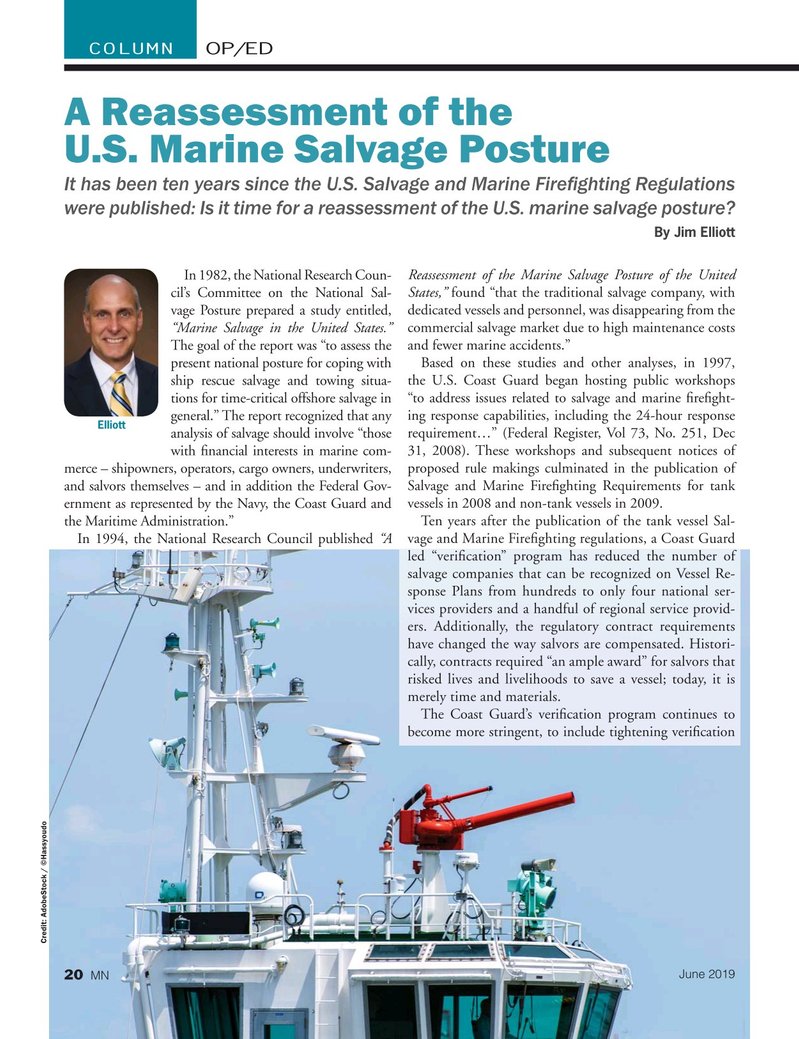
Page 20: of Marine News Magazine (June 2019)
Combat & Patrol Craft Annual
Read this page in Pdf, Flash or Html5 edition of June 2019 Marine News Magazine
COLUMN OP/ED
A Reassessment of the
U.S. Marine Salvage Posture
It has been ten years since the U.S. Salvage and Marine FireÀ ghting Regulations were published: Is it time for a reassessment of the U.S. marine salvage posture?
By Jim Elliott
In 1982, the National Research Coun- Reassessment of the Marine Salvage Posture of the United cil’s Committee on the National Sal- States,” found “that the traditional salvage company, with vage Posture prepared a study entitled, dedicated vessels and personnel, was disappearing from the “Marine Salvage in the United States.” commercial salvage market due to high maintenance costs
The goal of the report was “to assess the and fewer marine accidents.” present national posture for coping with Based on these studies and other analyses, in 1997, ship rescue salvage and towing situa- the U.S. Coast Guard began hosting public workshops tions for time-critical offshore salvage in “to address issues related to salvage and marine ? re? ght- general.” The report recognized that any ing response capabilities, including the 24-hour response
Elliott analysis of salvage should involve “those requirement…” (Federal Register, Vol 73, No. 251, Dec with ? nancial interests in marine com- 31, 2008). These workshops and subsequent notices of merce – shipowners, operators, cargo owners, underwriters, proposed rule makings culminated in the publication of and salvors themselves – and in addition the Federal Gov- Salvage and Marine Fire? ghting Requirements for tank ernment as represented by the Navy, the Coast Guard and vessels in 2008 and non-tank vessels in 2009. the Maritime Administration.” Ten years after the publication of the tank vessel Sal-
In 1994, the National Research Council published “A vage and Marine Fire? ghting regulations, a Coast Guard led “veri? cation” program has reduced the number of salvage companies that can be recognized on Vessel Re- sponse Plans from hundreds to only four national ser- vices providers and a handful of regional service provid- ers. Additionally, the regulatory contract requirements have changed the way salvors are compensated. Histori- cally, contracts required “an ample award” for salvors that risked lives and livelihoods to save a vessel; today, it is merely time and materials.
The Coast Guard’s veri? cation program continues to become more stringent, to include tightening veri? cation
Credit: AdobeStock / ©Hassyoudo
June 2019 20 MN

 19
19

 21
21
